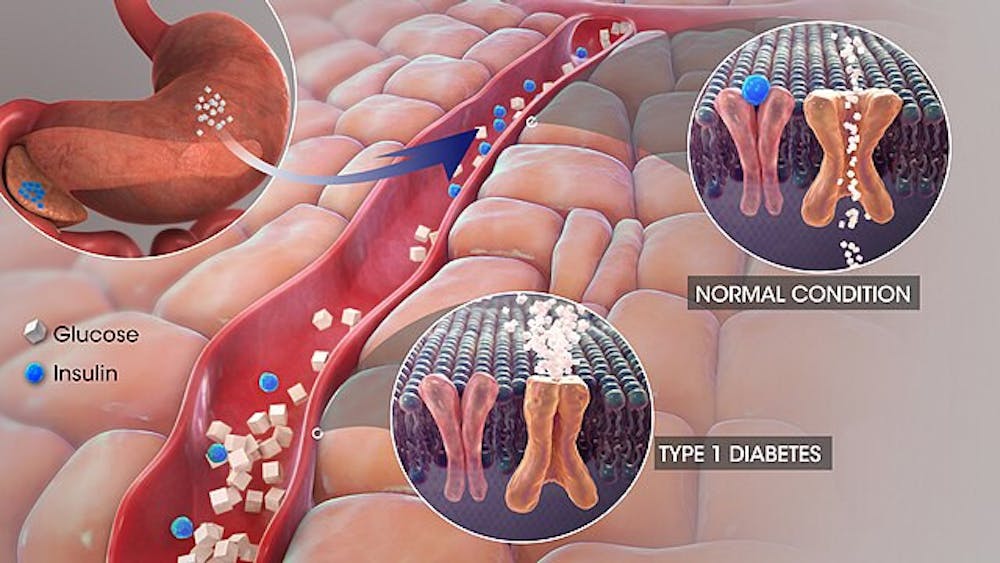This week’s Science News in Review is filled with new discoveries. From advances in therapeutics for schizophrenia treatment to fish that can taste with their legs, news this week focuses on groundbreaking innovations but also provides a reminder to stay cautious when reading scientific literature.
A new drug highlights advances in schizophrenia treatment
KarXT — a new drug for schizophrenia — was recently approved and represents the first new schizophrenia medication approved in many years. Whereas other antipsychotics target dopamine, abnormal levels of which are responsible for core symptoms of schizophrenia, the new drug acts on muscarinic receptors, which are responsible for relaying neurotransmitter signals between neurons and other body cells. Activation of muscarinic receptors inhibits dopamine release. Not only can KarXT alleviate these core symptoms, but it can potentially improve cognitive function with fewer side effects. However, the current drug still faces potential shortcomings, including its mandate for twice-daily administration and its prospective pricing somewhere between $16,000-$20,000 per dose.
Stem cell therapy can reverse diabetes
Researchers at Peking University in Beijing extracted cells from type 1 diabetes patients and reverted them to pluripotency, which allows the cells to differentiate into any cell type. From there, these induced pluripotent stem cells were differentiated into 3D clusters of islet cells — critical for producing insulin and glucagon in the human body. Islets were injected into a patient’s abdominal muscles, where they were monitored using magnetic resonance imaging (MRI). After about three months, the patient was producing enough insulin to live without additional help — a level of production she’d maintained for over a year.
Results from the study need to be replicated in more patients for larger-scale acceptance of the therapy. Additionally, immunotherapy in general comes with its drawbacks, including the risk of rejection and difficulty commercializing and scaling up personalized therapies. Nonetheless, this research represents a profound advancement in endocrine research and stem cell therapy to treat chronic diseases.
A species of fish with legs uses them to do more than just walk
Sea robins are a group of fish with two fins and six crablike legs, which they use to dig into sand and find buried prey. It was recently found that in some species, the legs can “taste” prey similar to how human tongues taste food. In this study, researchers placed individual sea robins into tanks with water and sand, and buried mussels, capsules with mussel extract or control capsules containing seawater in the sand. One particular species, Prionotus carolinus, could accurately turn over prey-related items without turning over the seawater capsules.
Further research found that the legs of these sea robins were covered in papillae — small bumps that contained taste receptors similar to the taste buds on a human tongue. Additional genetic experiments found that the papillae have touch-sensitive nerve cells that enable sea robins to figure out where to dig. The high activity of the gene t1r3 — which synthesizes a key receptor found in mammalian sweet-detecting taste buds — was observed at the tips of their legs, confirming these findings. Additionally, scientists also found that tbx3a — a gene that drives limb development in various animals — played a crucial role in sea robin leg formation as well as the formation of the papillae at the tips of the legs.
Many other species in the same group of sea robins do not have this “tasting” function, so this discovery provides a novel example of the unpredictability of evolution in animal behavior.
Proponents of scientific rigor retract paper on benefits of scientific rigor
A study published in November of 2023 in Nature Human Behavior, which examined the the benefits of rigor-boosting measures in the scientific literature, was retracted due to a lack of scientific rigor. This study focused on the impacts of factors such as methodological transparency, announcing goals and methods ahead of time before publication and large sample sizes on the replicability of scientific experiments. The paper reported that these factors boosted replicability substantially; however, it was found that the article did not provide sufficient evidence to directly elucidate the relationship between rigor-enhancing practices and replicability.
In the critique of the article published by Nature Human Behavior, it was found that the preregistration documents for the study emphasized nothing about the project’s goals. There was no evidence that the study was designed to evaluate replicability. The project was instead supposed to understand the decline effect, where scientific claims receive decreased support over time. Additionally, the project eliminated all researcher-specific variability. All studies and effects in the sample were exposed to the same standardized protocol and handled identically, meaning that no meaningful inference could be made about the effect of any of these practices on replicability.
Though the authors are currently revising the manuscript significantly to resubmit for peer review, it does not erase the irony that proponents of scientific rigor are struggling to embrace rigor-enhancing practices. This news is a lesson in the importance of continually holding scientific literature to a high standard.





